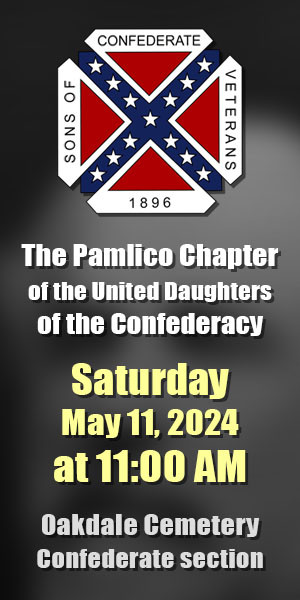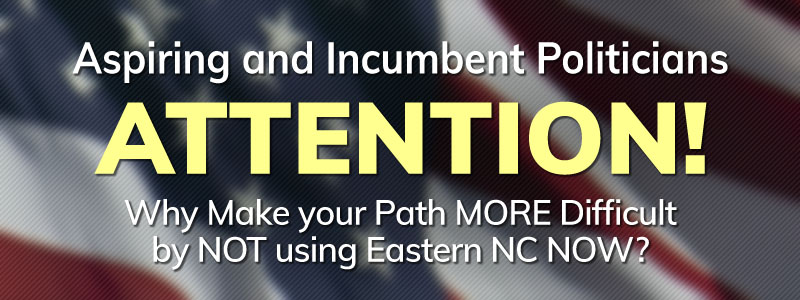A Constitutional Republic, where the First Amendment is Essential to OUR Survival
Anti-VIVA Activists Battle Facts
Publisher's note: This post, by Susan Myrick, was originally published in the Elections & Voting section(s) of Civitas's online edition.
The court battle over the Voter Information Verification Act (VIVA), the landmark election reform legislation signed into law in 2013, will begin again in a few weeks. U.S. Judge Thomas D. Schroeder, from the United States District Court, Middle District of North Carolina, will begin to hear arguments from lawyers representing Blueprint NC* groups — including the NAACP-NC* and the League of Women Voters* — and the U.S. Justice Department.
 A lot has happened since the law was signed and enacted. All of VIVA's provisions — with the exception of voter identification requirement (which will not go into effect until 2016) — were implemented for the 2014 Primary and General Elections. This detail poses a very real problem for the plaintiffs because there are now facts that indicate their primary objections to the provisions of the law for all intents and purposes have been destroyed.
A lot has happened since the law was signed and enacted. All of VIVA's provisions — with the exception of voter identification requirement (which will not go into effect until 2016) — were implemented for the 2014 Primary and General Elections. This detail poses a very real problem for the plaintiffs because there are now facts that indicate their primary objections to the provisions of the law for all intents and purposes have been destroyed.
Click here for story on VIVA timeline
The liberal Left has already lost on two key fronts.
Even before VIVA was drafted, the liberal opponents of election reform claimed that hundreds of thousands — even a million — voters would be disenfranchised because they did not have the proper ID. This 2011 WRAL article is titled "1 Million Registered NC Voters Don't Have Photo ID." The 1-million estimate resulted from a very flawed study produced by the Brennan Center for Justice at the NYU School of Law. In fact, credible polls show that less than 1 percent of North Carolina voters reported not having an acceptable official form of ID.
The truth: Since North Carolina began issuing free voter photo ID's on January 2, 2014, the state has issued fewer than 1,000 cards to individuals. According to the latest data provided by the State Board of Elections, dated June 11, 2015, there were 990 records in a spreadsheet representing 990 people. But a closer look at that data shows at least 18 people with two identical records, 3 people with three records, five people that have moved and have been reissued the free ID, and at least five "test" records — three from Wake, one from Mecklenburg and one from Wayne County. At the current number this would represent around .0155% of all voters without valid ID in North Carolina. Far less than even 1 percent reported in polling.
Top Ten Counties by Free Voter ID Cards Issued

Free Voter Cards Issued by Month-Year

The liberals who oppose election reform have maintained that the new law would suppress votes, especially in the African-American community. Unfortunately for them, the State Board of Elections announced shortly after the polls closed on Election Day, November 4, 2014, that the midterm turnout set a record in North Carolina. It turns out that 2,717,920 voters had cast ballots, compared to 2,700,393 in 2010.
The 2014 General Election marked the second major election where the state used the provisions in VIVA to administer statewide voting processes.
First, the 2014 Primary in May gave the preliminary indication that the new law would not diminish turnout. In that election, overall turnout increased by 5 percent compared to the 2010 Primary, and turnout went up almost 30 percent among African-American voters.
Then, in the November General Election, early, in-person voting increased overall by 20 percent over the 2010 midterms, and rose by 45 percent among blacks. It took just five days of early voting in the General Election to exceed the levels of 2010, when voters had already voted for 15 days. The increase in turnout in North Carolina was not an anomaly, either. Other states, such as Georgia and Indiana, that have implemented election reforms have seen increased turnout after implementation of their new laws.
The news of increased turnout and a miniscule demand for free voter ID's cannot bode well for the progressive groups suing North Carolina over the new law. These two simple facts prove the liberal/progressive accusations of voter suppression are groundless, but activists certainly won't back down. Stories of George Soros funding voter cases across the country and already deploying an army of lawyers surely must embolden the groups fighting reform in North Carolina.
What the Left really wants to do is protect ultra-partisan get-out-the-vote (GOTV) efforts and voter registration efforts built around lax and liberal voting laws. In the end, the opponents of election reform are not truly trying to protect the election process. Their real motivation is advancing their organizations' agendas.
Last summer, Judge Schroeder ruled against the plaintiffs when they sought a preliminary injunction for several of the provisions in VIVA. This year he will be hearing arguments on the whole law. The preliminary injunction hearing ran four days; this hearing could last weeks. Closely following the arguments in this stage should reveal what the battle over VIVA is really about.
*The left-wing Blueprint North Carolina "eviscerate network" distributed a memo in February 2013 outlining a "collective statewide strategy" to attack Republicans and conservatives in North Carolina. The memo called for "[c]rippling their leaders (McCrory, Tillis, Berger etc.)." and using tactics to "eviscerate the leadership and weaken their ability to govern." The network is made up of more than 60 groups, including the NAACP, the League of Women Voters and A. Phillip Randolph Institute. Click here for a list of groups in the Blueprint NC network.
Go Back
The court battle over the Voter Information Verification Act (VIVA), the landmark election reform legislation signed into law in 2013, will begin again in a few weeks. U.S. Judge Thomas D. Schroeder, from the United States District Court, Middle District of North Carolina, will begin to hear arguments from lawyers representing Blueprint NC* groups — including the NAACP-NC* and the League of Women Voters* — and the U.S. Justice Department.
 A lot has happened since the law was signed and enacted. All of VIVA's provisions — with the exception of voter identification requirement (which will not go into effect until 2016) — were implemented for the 2014 Primary and General Elections. This detail poses a very real problem for the plaintiffs because there are now facts that indicate their primary objections to the provisions of the law for all intents and purposes have been destroyed.
A lot has happened since the law was signed and enacted. All of VIVA's provisions — with the exception of voter identification requirement (which will not go into effect until 2016) — were implemented for the 2014 Primary and General Elections. This detail poses a very real problem for the plaintiffs because there are now facts that indicate their primary objections to the provisions of the law for all intents and purposes have been destroyed.
Click here for story on VIVA timeline
The liberal Left has already lost on two key fronts.
1.Voter Disenfranchisement
Even before VIVA was drafted, the liberal opponents of election reform claimed that hundreds of thousands — even a million — voters would be disenfranchised because they did not have the proper ID. This 2011 WRAL article is titled "1 Million Registered NC Voters Don't Have Photo ID." The 1-million estimate resulted from a very flawed study produced by the Brennan Center for Justice at the NYU School of Law. In fact, credible polls show that less than 1 percent of North Carolina voters reported not having an acceptable official form of ID.
The truth: Since North Carolina began issuing free voter photo ID's on January 2, 2014, the state has issued fewer than 1,000 cards to individuals. According to the latest data provided by the State Board of Elections, dated June 11, 2015, there were 990 records in a spreadsheet representing 990 people. But a closer look at that data shows at least 18 people with two identical records, 3 people with three records, five people that have moved and have been reissued the free ID, and at least five "test" records — three from Wake, one from Mecklenburg and one from Wayne County. At the current number this would represent around .0155% of all voters without valid ID in North Carolina. Far less than even 1 percent reported in polling.


2.Turnout
The liberals who oppose election reform have maintained that the new law would suppress votes, especially in the African-American community. Unfortunately for them, the State Board of Elections announced shortly after the polls closed on Election Day, November 4, 2014, that the midterm turnout set a record in North Carolina. It turns out that 2,717,920 voters had cast ballots, compared to 2,700,393 in 2010.
The 2014 General Election marked the second major election where the state used the provisions in VIVA to administer statewide voting processes.
First, the 2014 Primary in May gave the preliminary indication that the new law would not diminish turnout. In that election, overall turnout increased by 5 percent compared to the 2010 Primary, and turnout went up almost 30 percent among African-American voters.
Then, in the November General Election, early, in-person voting increased overall by 20 percent over the 2010 midterms, and rose by 45 percent among blacks. It took just five days of early voting in the General Election to exceed the levels of 2010, when voters had already voted for 15 days. The increase in turnout in North Carolina was not an anomaly, either. Other states, such as Georgia and Indiana, that have implemented election reforms have seen increased turnout after implementation of their new laws.
The news of increased turnout and a miniscule demand for free voter ID's cannot bode well for the progressive groups suing North Carolina over the new law. These two simple facts prove the liberal/progressive accusations of voter suppression are groundless, but activists certainly won't back down. Stories of George Soros funding voter cases across the country and already deploying an army of lawyers surely must embolden the groups fighting reform in North Carolina.
What the Left really wants to do is protect ultra-partisan get-out-the-vote (GOTV) efforts and voter registration efforts built around lax and liberal voting laws. In the end, the opponents of election reform are not truly trying to protect the election process. Their real motivation is advancing their organizations' agendas.
Last summer, Judge Schroeder ruled against the plaintiffs when they sought a preliminary injunction for several of the provisions in VIVA. This year he will be hearing arguments on the whole law. The preliminary injunction hearing ran four days; this hearing could last weeks. Closely following the arguments in this stage should reveal what the battle over VIVA is really about.
*The left-wing Blueprint North Carolina "eviscerate network" distributed a memo in February 2013 outlining a "collective statewide strategy" to attack Republicans and conservatives in North Carolina. The memo called for "[c]rippling their leaders (McCrory, Tillis, Berger etc.)." and using tactics to "eviscerate the leadership and weaken their ability to govern." The network is made up of more than 60 groups, including the NAACP, the League of Women Voters and A. Phillip Randolph Institute. Click here for a list of groups in the Blueprint NC network.
| School Choice: The Engine Of A Growing Economy? | Civitas Institute, Editorials, Op-Ed & Politics | Another Medicaid problem. What's new? |





















